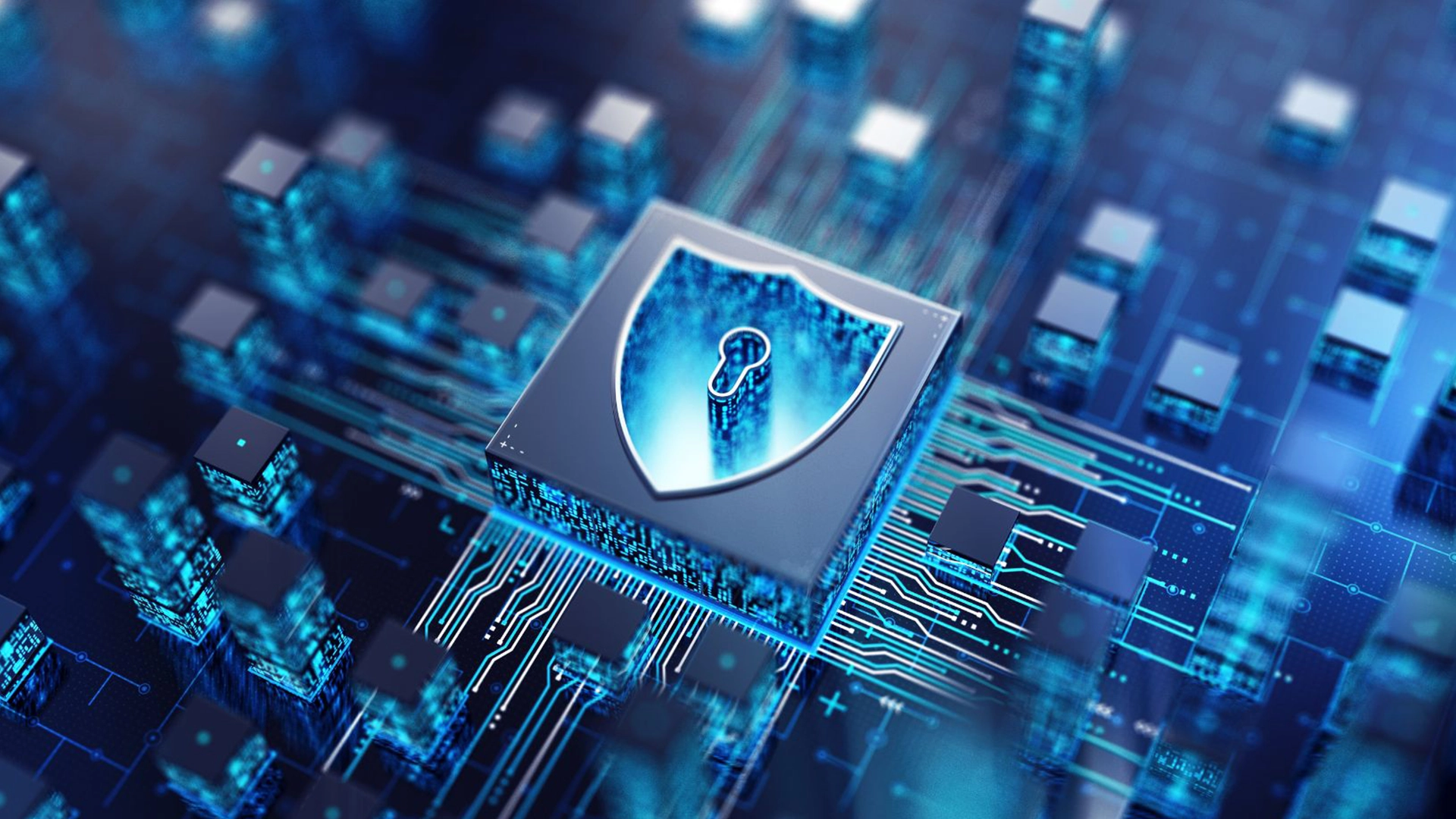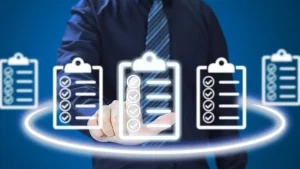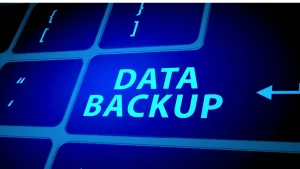To create a successful digital presence, the risk of cyber threats and attacks can restrain your growth. To overcome this problem, we have cybersecurity frameworks. They are like a blueprint cybersecurity service provider uses to build a cyber defense system.
These frameworks let you identify and fix vulnerabilities to protect crucial data for building a secure digital environment. While strong firewalls and cybersecurity awareness training are crucial, it is also essential to use frameworks like NIST and ISO for enhanced security.
In this blog, we’ll dive into cybersecurity frameworks, their benefits, and the best cybersecurity frameworks to help you maintain security. So, let’s begin with what exactly cybersecurity frameworks are.
What Are Cybersecurity Frameworks?
Cybersecurity frameworks are structured sets of guidelines and standards that help organizations manage security and protect their data. These frameworks offer ways to assess and improve an organization’s cybersecurity to ensure the confidentiality, integrity, and availability of information.
It includes a set of security measures that organizations can implement to address specific cybersecurity risks. These measures cover various aspects of cybersecurity, such as access control, data protection, and security monitoring.
Some of the best cybersecurity frameworks include the National Institute of Standards and Technology (NIST) and the International Organization for Standardization (ISO). Organizations globally use these frameworks to maintain effective cybersecurity programs.
Why Use Cybersecurity Frameworks?
You need a robust cybersecurity strategy to deal with cyber threats and attacks. This is where cybersecurity frameworks help you with structured and standardized approaches.
Benefits of Using Cybersecurity Frameworks
- Structured Approach: Frameworks provide a structured approach to cybersecurity, helping organizations organize their cybersecurity efforts to cover all necessary areas.
- Risk Management: It helps organizations identify, assess, and prioritize cybersecurity risks. This allows them to allocate resources effectively to address the most critical threats.
- Compliance: Many frameworks are aligned with regulatory requirements and industry standards to ensure compliance with applicable laws and regulations.
- Best Practices: Cybersecurity frameworks are based on best practices and industry standards, providing organizations with a proven approach to cybersecurity improvement.
- Efficiency: They help organizations streamline their cybersecurity efforts and make more efficient use of resources through a structured cybersecurity approach.
- Communication: It provides a common language for discussing cybersecurity risks and controls for easier internal and external communication.
- Continuous Improvement: Frameworks often include mechanisms for continuous improvement so organizations can adapt to new threats and technologies over time.
These benefits can enhance and strengthen the security layer. If you need to implement this framework at your end, you can hire cybersecurity experts for secure solutions.
Types of Cybersecurity Frameworks?
There are three main types of cybersecurity frameworks based on function with their strengths and focus areas. Choosing the right framework depends on your organization’s specific needs and industry.
Here’s a breakdown of the different types of cybersecurity frameworks you’ll encounter:
Control Frameworks
These frameworks, like the CIS Controls, focus on implementing specific controls and best practices to mitigate cyber risks. They provide a clear checklist of actions to be taken for addressing common vulnerabilities.
- Benefits: Easy to implement, provides a clear roadmap for addressing common vulnerabilities and improves overall security posture.
- Drawbacks: It may not be good enough for complex organizations and may not address specific industry regulations.
Program Frameworks
They guide developing and maintaining a cybersecurity program, going beyond just a checklist. This includes elements like risk management, incident response, and access controls. It acts as a blueprint for building a cybersecurity program that addresses all aspects of cyber risk management. Examples of program-focused include COBIT and SOC 2.
- Benefits: Provides a structured approach to building a comprehensive program, improves overall security, and can help with regulatory compliance.
- Drawbacks: Implementing it can be more complex and requires ongoing commitment and resources.
Risk Frameworks
These frameworks, like the Factor Analysis of Information Risk (FAIR), help organizations identify, assess, and prioritize cyber risks. They provide an approach to understanding cyber threats’ potential impact on your business. Think of them as a tool for analyzing your specific risk to focus efforts on critical areas.
- Benefits: Helps prioritize resources based on risk and enables data-driven decision-making for security investments.
- Drawbacks: Requires effective implementation expertise and may not provide specific guidance on controls or mitigation strategies.
With this, you can make an informed choice when choosing a cybersecurity framework. Now, let’s check which are the best cybersecurity frameworks.
Best Cybersecurity Frameworks
NIST Cybersecurity Framework (CSF)
The National Institute of Standards and Technology (NIST) is a cybersecurity framework (CSF) developed by the NIST to help organizations manage and reduce cybersecurity risks. It provides guidelines, best practices, and standards for organizations to assess and improve their cybersecurity posture.
Key Features:
- Core Functions: The CSF consists of five core functions: Identify, Protect, Detect, Respond, and Recover. These functions provide a comprehensive approach to managing cybersecurity risks.
- Framework Categories: Each core function is further divided into categories, such as Asset Management, Access Control, and Incident Response. These categories help organizations focus their cybersecurity efforts on specific areas.
- Implementation Tiers: The CSF includes Implementation Tiers, which help organizations gauge the sophistication of their cybersecurity practices and prioritize improvements.
- Risk Management Approach: The CSF emphasizes a risk management approach, encouraging organizations to assess and prioritize cybersecurity risks based on potential impact.
ISO 27001 and ISO 27002
These are internationally recognized standards designed for information security management. ISO 27001 offers the requirements for implementing a robust Information Security Management System (ISMS). It is a structured approach to managing and protecting your organization’s confidential information.
ISO 27002 complements ISO 27001 by providing a specific set of controls to implement within your ISMS. Achieving ISO 27001 certification demonstrates a strong commitment to information security and can be a valuable differentiator when competing for business.
Key Features:
- ISMS Requirements: ISO 27001 specifies the requirements for establishing, implementing, maintaining, and continually improving an ISMS. It provides a systematic approach to managing sensitive company information.
- Control Objectives: ISO 27002 provides a set of control objectives and controls that organizations can implement to address specific information security risks.
- Alignment with Business Objectives: ISO 27001 emphasizes aligning information security objectives with business objectives, ensuring that security measures support the organization’s overall goals.
- Certification: Organizations can undergo a certification process to demonstrate compliance with ISO 27001, assuring customers and stakeholders.
SOC 2
The Service Organization Controls (SOC) framework standards are specifically designed for service organizations. There are different SOC 2 types, but SOC 2 Type 2 is the most common and focuses on an organization’s security.
Key Features:
- Trust Services Criteria: SOC2 focuses on controls related to security, availability, processing integrity, confidentiality, and privacy. These criteria help service providers demonstrate their adherence to rigorous security standards.
- Independent Audit: To obtain a SOC2 report, organizations must undergo an independent audit conducted by a qualified CPA firm. This report assures customers and stakeholders that the organization’s controls are effective.
- Flexibility: SOC2 provides a flexible framework that can be tailored to the specific needs of different organizations. Based on their business requirements, organizations can choose which trust service criteria to include in their assessment.
- Customer Assurance: SOC2 assures customers that the service provider has implemented controls to protect their data and maintain the integrity of their systems.
CIS Controls
Developed by the Center for Internet Security (CIS), this framework is a practical and action-oriented approach to cyber risk management. Unlike frameworks that provide long guidelines, CIS Control offers a clear and specific checklist of actions to address common vulnerabilities.
Key Features:
- 18 Critical Controls: The CIS Controls consist of 18 critical security controls that cover various aspects of cybersecurity, including inventory and control of hardware assets, continuous vulnerability assessment, and controlled use of administrative privileges.
- Freely Available and Easy to Implement: CIS Controls are publicly available and don’t require significant investment. This makes them a good option for organizations with limited resources or those taking their first steps toward a more robust security program.
- Prioritization: The controls are prioritized based on their effectiveness in mitigating common cyber threats, helping organizations focus on the most critical areas.
- Implementation Guidance: The CIS Controls provide implementation guidance and resources to help organizations effectively apply the controls in their environments.
- Measurable Improvement: The CIS Controls provide a framework for measuring and improving an organization’s cybersecurity posture over time, helping organizations track their progress and identify areas for improvement.
GDPR
General Data Protection Regulation (GDPR) is a regulation created by the European Union (EU) that governs how organizations handle the personal data of EU citizens. Organizations that process the data of EU citizens must comply with GDPR to avoid huge fines.
While it is not focused on cybersecurity, implementing strong data privacy practices, as outlined by GDPR, can enhance your organization’s overall security.
Key Features:
- Data Protection Requirements: GDPR requires organizations to implement appropriate technical and organizational measures to ensure security appropriate to the risk, including the pseudonymization and encryption of personal data.
- Breach Notification: GDPR requires organizations to notify the relevant supervisory authority of data breaches within 72 hours of becoming aware of the breach. This helps to ensure timely response to data breaches.
- Individual Rights: GDPR gives individuals greater control over their personal data, including the right to access, correct, and delete their data, helping to protect individuals’ privacy rights.
- Global Impact: While GDPR is a European regulation, it applies to organizations worldwide that process the personal data of EU residents, making it a global standard for data protection and privacy.
HIPAA
Health Insurance Portability and Accountability Act (HIPAA) is not a cybersecurity framework but a regulatory standard in the United States to protect the privacy and security of patients’ protected health information (PHI). While not focused on cybersecurity, implementing strong data security practices is key to HIPAA compliance.
- Privacy Rule: The HIPAA Privacy Rule establishes national standards for protecting health information and specifies individuals’ rights regarding their health information.
- Security Rule: The HIPAA Security Rule sets national standards for the security of electronic protected health information (ePHI) and requires covered entities to implement safeguards to protect ePHI.
- Breach Notification Rule: HIPAA requires covered entities to notify affected individuals and the Secretary of Health and Human Services. In some cases, even for the media breach of unsecured ePHI.
PCI DSS
Payment Card Industry Data Security Standard (PCI DSS ) is not a cybersecurity framework but a standard developed by the PCI SSC. It mandates specific security requirements for organizations that handle cardholder data. This includes merchants, processors, acquirers, and service providers. Using these standards helps protect cardholder data from breaches and fraud.
- Security Controls: PCI DSS specifies a set of security controls and best practices for securing credit card information, including requirements for network security, access control, and encryption.
- Compliance Validation: Organizations that process credit card payments must undergo regular assessments to validate their compliance with PCI DSS. This may include self-assessments, on-site audits, or assessments by a Qualified Security Assessor (QSA).
- Data Protection: PCI DSS requires organizations to protect cardholder data by implementing strong access control measures, encryption, and other security measures.
- Breach Notification: PCI DSS requires organizations to notify payment brands and affected individuals in case of a data breach involving cardholder data.
These frameworks provide organizations with a structured approach to managing cybersecurity risks and can help improve their security posture. Each framework has its own strengths and focus areas, allowing you to choose and implement frameworks with the help of a cybersecurity company.
FAQs on Cybersecurity Frameworks
Yes, managed IT services have the expertise to choose and customize the framework to ensure effective security. They can also provide valuable assistance with implementation, monitoring, and maintaining your cybersecurity posture.
The key components of a cybersecurity framework typically include risk assessment, security controls, incident response, and continuous monitoring and improvement.
The ideal framework depends on your industry, size, and specific needs. Consider factors like:
Industry Regulations: Certain industries may have compliance requirements that dictate your chosen framework (e.g., HIPAA for healthcare).
Organization Size and Maturity: Larger organizations with complex IT environments might benefit from a framework like ISO 27001, while smaller organizations might prefer a more lightweight option like CIS Controls.
Risk Tolerance: Organizations with a higher risk tolerance may need a more robust framework than those with a lower risk tolerance.
Conclusion
Cybersecurity frameworks provide a roadmap for organizations to identify, prevent, detect, respond to, and recover from cyberattacks. Choosing the right framework depends on your organization’s needs and risk tolerance.
There is no single effective approach to security, so you need to use various elements from multiple frameworks to craft a multi-layered defense. If you are unsure where to start, partner with cybersecurity providers to choose and implement a framework that fits your requirements.Want your organization safeguarded? Contact our experts today!





